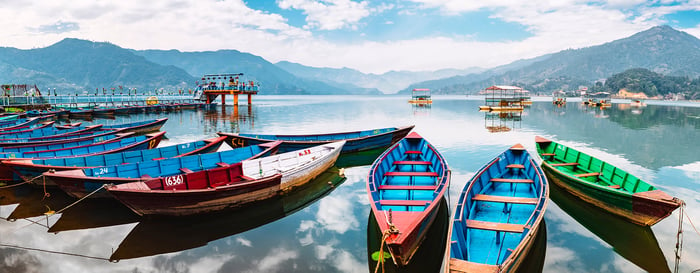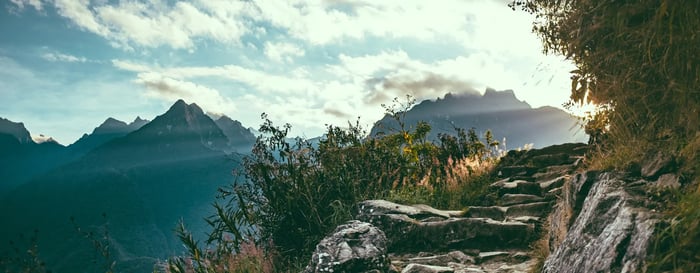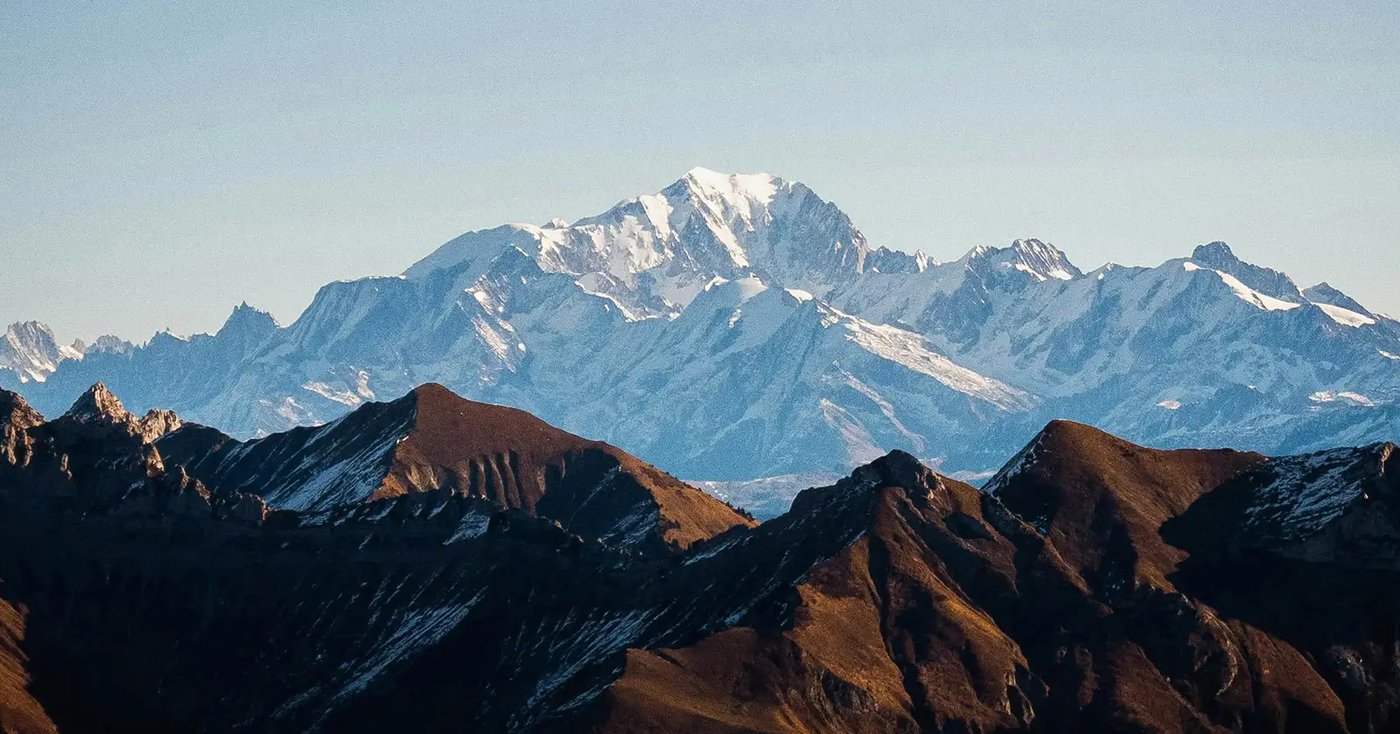Whenever I talk about my climb of Mount Fuji, it’s in numbers. The number of hours I walked for (11 up, six down), and the number of hours I slept (three) when we stopped for the night. The height of the mountain (3,776m above sea level) and the temperature at the top (five degrees). It’s a quick, compact way of describing an experience that was at once hellishly difficult and sublimely beautiful.
But when I remember the climb, I can remember almost every moment with the most striking clarity. Those 20 or so hours on the side of that mountain involved so much more than a single paragraph, ending lamely with “it was really tough”, could ever describe.
Climbing Mount Fuji is, without a doubt, the hardest thing I have ever done. I’ve never exactly been fit, and this summer I was at my peak levels of unfitness. Mount Fuji is a challenge for most people. But for someone who hasn’t seen a gym in years, who gets out of breath climbing a flight of stairs, the mountain is borderline impossible.

There were many times on the way up when I thought I wouldn’t make it. There were times when the only thing stopping me from giving up was the queue of people behind me. Several times, I hung at the back of my tour group, letting tears crawl down my cheeks, which were bright red not just from the exertion but from my burning embarrassment at thinking I could do this.
The biggest challenge when it comes to climbing a mountain isn’t necessarily the physical side. Fitness makes the whole process easier, but there’s also something internal that you have to overcome. We all have that little voice inside, telling us we’re not good enough, that we’ll never make it. Most of the time it’s easy enough to ignore. To drown it out with positive thoughts. But on the side of a mountain, with your legs screaming in pain with every step, suddenly the voice is all you can hear.
It wasn’t just the difficulty of the climb, which – for an absolute beginner - was extreme. There is so much else to overcome. Unpredictable variables, like weather, that I wasn’t prepared for. I began the hike in a mild typhoon, one which had been threatened for several days and finally broke as I drove towards Fuji. Lightning struck the side of the mountain as we climbed, so close that the thunder echoed around us almost immediately afterwards.
Later, it was too hot. The sky was a brilliant, impossible blue and in the clear air from our high vantage point, the colours of the world seemed sharper and more vivid. Japan was in the grip of a deadly heatwave, one that had been declared a natural disaster, and that burning summer was not the time to be climbing a mountain.
Inadvertently, I had also chosen the busiest weekend of the year to climb Mount Fuji. It was National Mountain Day, during the summer Obon holiday in Japan. Large chunks of the path upwards were nothing more than a dense queue of people. The forced slowness of the pace was a mixed blessing, because it kept me from trying to climb quicker than I was capable of. But it also trapped me on the side of a mountain in the sun, shuffling slowly forwards, or not moving at all – dragging the whole process out for hours longer than it needed to last.
Night fell, and the lightning storm started up again. Purple forks of lightning leapt through the sharp blackness of the night sky, giving me tantalising flashes of an alien landscape. A surreal desert of red ash, dotted with twisted rock formations.
Around 9pm, we made it to a mountain hut somewhere past the eighth station. I felt broken and half dead, moving robotically through the simple acts of taking off my shoes, eating dinner, brushing my teeth. I slept for three hours on a sleeping bag on the floor of a hut, literally touching the shoulders of my neighbours on either side. It was noisy, uncomfortable, and cold; somehow, I slept like a brick.
Dragged awake at 1am by my guide, I laced my hiking boots back onto my throbbing feet. Later, I would learn that I’d done permanent damage to the nerves in my toe, by wearing too-tight hiking boots for a prolonged period of time. The list of ways in which I was not prepared for this climb is long and ridiculous.
But despite it all, I pressed onwards into the night. Finally, the sky was cloudless, and the Milky Way shimmered overhead, clearer than I’ve ever seen it before. Shooting stars zipped past us, seeming so close that we might have been climbing right into the sky itself.

I have found that even the most difficult and painful things we do, no longer feel difficult or painful in memory. When I look back at that moment, I can see the night sky and the shooting stars. I can remember the crisp, icy air that tasted fresher than any air I’d ever breathed before. But I don’t recall the pain. I know that I was in agony, that pain ripped through my legs with every step and that my toes were numb from the nerve damage I was inflicting upon them. But I don’t remember it, other than as a vague fact. No matter how difficult something is, in memory the difficulty seems to recede, leaving behind only the other memories.
Suddenly, finally, with a shot of elation that unlocked some last reserve of energy deep within me, I saw the last red Torri gate ahead of me. Glowing with the steady stream of headlamps passing beneath it and beckoning to me. Rarely in my life have I felt such pure jubilation, such unbounded pride in myself. I passed through the gate - bouncing with every step, grinning deliriously – and turned to see the light of an approaching dawn warming the distant clouds.
That was the moment that made the whole thing worth it. Sitting on a freezing cold rock, with my feet in the scratchy rust-coloured ash of an ancient volcano, realising that I had done it. I had climbed Mount Fuji – against all the odds. In that moment, bearing witness to a mental and physical strength I’d had no idea existed within me, I felt so empowered it was almost euphoric.
Feeling inspired?
At Lightfoot Travel, we believe the most unforgettable journeys challenge and change us. If you’re seeking your own moment of quiet triumph – whether it’s summiting Mount Fuji, tracing spiritual pilgrimages through Japan, or discovering extraordinary landscapes off the beaten path – speak to our experts today to start planning your own tailormade holiday to Japan.
Nepal for Families
Kathmandu Valley Pokhara & Annapurna Nepal
- Enjoy a trekking excursion with magnificent views of Annapurna South
- Interact with teacher and pupils at a local Nepalese school
- Float past forested valleys on a rafting adventure on the Seti River
- See the flora, wildlife and birds of the Nepalese jungle on a safari trip
- Dine with a Shepa summiteer and hear stories about climbing Mount Everest
Salkantay Trek To Machu Picchu
Lima Cusco, Sacred Valley, & Machu Picchu
- Conquer mountain switchbacks as you trek the Salkantay Pass
- Marvel at the Andean landscape as you trek with a private guide
- Relax in a remote lodge each evening surrounded by the cloud forest
- Visit Machu Picchu early in the morning as the sun rises
- Explore the ancient towns & sites of the Sacred Valley
Summer in Hokkaido
-
Explore the wild and beautiful flora of Kiritappu Wetland
-
Visit the mysterious and desolate landscape of Todowara
-
See Japan brown bears on a cruise along the Shiretoko peninsula
-
Explore Mt. Meakan, the forests of Kawayu Onsen, and meet the Ainu people
-
Hike around the base of Mt Asahidake amongst ponds and wild flowers








